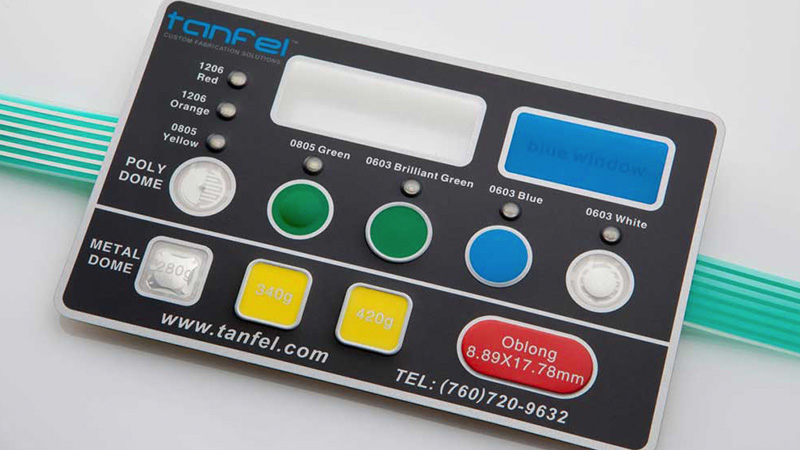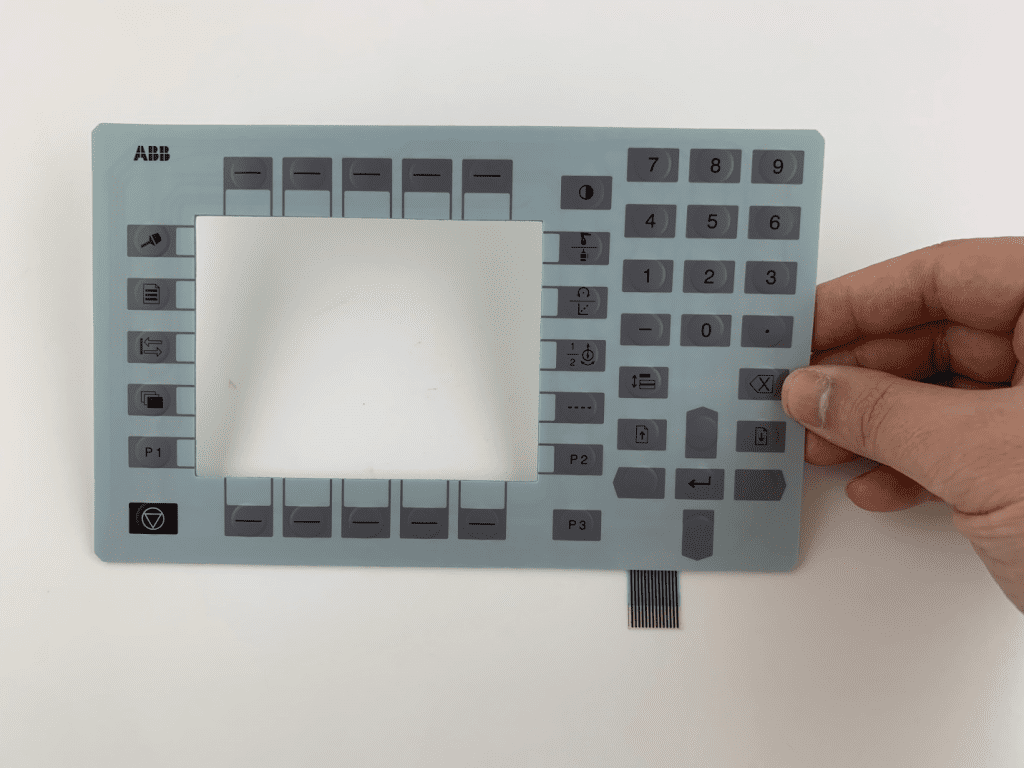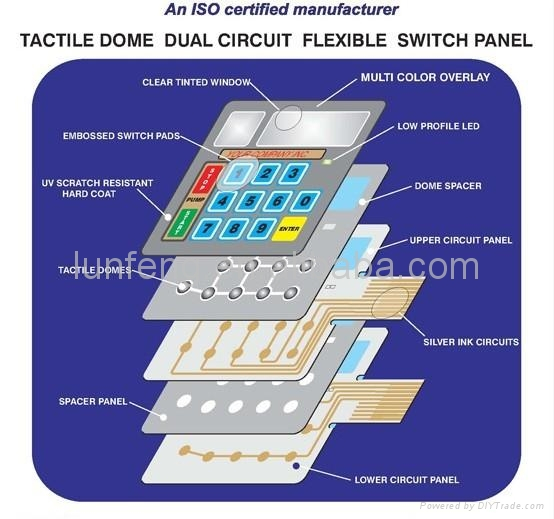How Membrane Switches Are Designed for Easy Maintenance and Repair
How Membrane Switches Are Designed for Easy Maintenance and Repair
Blog Article
Understanding the Importance of Membrane Switches in Interface
Membrane switches are important components in the design of effective interface, promoting not just functionality however likewise boosting aesthetic charm and user communication. Their special features, such as resistance to environmental variables and personalized layouts, make them ideal for a varied array of applications throughout numerous markets. As we discover the future patterns and different advantages related to Membrane innovation, it comes to be clear that these buttons are a lot more than just elements; they stand for a convergence of advancement and usefulness. The ramifications of this modern technology on individual experience are worth checking out better.
What Are Membrane Buttons?

The spacer layer, which contains glue residential properties, enables the splitting up of the circuit layer from the overlay, guaranteeing that the switch remains in a non-activated state till pushed. When pressure is related to the overlay, it presses the spacer layer, bridging the space and finishing the circuit in the underlying layer. This style not only lowers the physical space needed for typical mechanical buttons yet also improves the durability of the device, as Membrane switches are generally immune to dirt, dampness, and various other ecological aspects.
Frequently found in applications ranging from customer electronic devices to clinical tools, Membrane buttons are essential to contemporary innovation, providing a effective and straightforward interface that aligns with contemporary style needs.
Advantages of Membrane Switches
While various button technologies exist, Membrane Switches deal unique advantages that make them especially preferable in numerous applications. Among the key benefits of Membrane buttons is their portable design, which permits for space-saving executions in devices where property is limited. Their thin account not only enhances aesthetic allure however likewise helps with lightweight building and construction.
Another significant benefit is their resistance to ecological aspects. Membrane switches are normally sealed against dampness, dust, and contaminants, making them ideal for use in demanding environments, such as medical devices and industrial tools. This sturdiness expands the life expectancy of the switch, reducing maintenance costs and enhancing reliability.
Moreover, Membrane buttons can be personalized to satisfy specific layout requirements, integrating unique graphics and shades that enhance customer communication. Their tactile comments choices can likewise be customized to give a satisfying customer experience. Furthermore, Membrane switches are cost-effective, specifically in high-volume applications, as they can be generated successfully.
Applications in Numerous Industries

In the customer electronic devices market, Membrane switches prevail in tools such as microwaves, washing machines, and push-button controls. Their responsive feedback and aesthetic alternatives enhance customer experience while providing a smooth, contemporary appearance. Furthermore, vehicle manufacturers utilize Membrane switches in control panel controls and infotainment systems, where space is limited, and user interaction is crucial.
Moreover, the industrial market leverages Membrane switches in control panels for equipment and devices, enabling intuitive operation in frequently extreme settings. Their resistance to chemicals and moisture makes sure longevity and dependability in these applications. On the whole, the flexibility of Membrane Switches contributes substantially to their extensive usage, making them indispensable in different technical domains.
Design Considerations for Membrane Buttons

When developing Membrane buttons, several vital considerations have to be taken into consideration to make sure optimum performance and individual experience. The choice of products is crucial; picking sturdy, high-grade substrates can enhance the button's long life and resistance to ecological variables such as moisture and temperature level fluctuations.
Second of all, the style of the visuals overlay must focus on quality and convenience of usage. Icons and text need to be clear, and the format should help with instinctive interaction (membrane switches). Additionally, tactile comments is crucial; integrating a tactile dome or other mechanisms can enhance the user experience by giving physical verification of activation
An additional essential aspect is the switch's electric efficiency. Developers must guarantee that the conductive traces are properly designed to minimize resistance and avoid signal interference. This involves analyzing the needed actuation force and making certain compatibility with the electronic parts they will certainly user interface with.

Future Patterns in Membrane Modern Technology
As modern technology remains to advancement, Membrane buttons are poised to progress considerably, driven by technologies in materials and manufacturing methods. One arising trend is the incorporation of advanced products, such as conductive inks and adaptable substrates, which boost resilience and minimize the general weight of Membrane buttons. These products not just improve the tactile feedback however also enable the design of switches that can stand up to harsher ecological conditions.
Furthermore, the combination of touch-sensitive technologies is changing typical Membrane Switches right into more interactive interface. Capacitive touch sensing units embedded within Membrane switch panels can provide a more instinctive and responsive customer experience, lining up with the expanding demand for smooth, contemporary layouts in customer electronic devices.
Additionally, innovations in printing strategies, such as electronic and 3D printing, enable fast prototyping and personalization of Membrane switches. This flexibility enables suppliers to react much more promptly to market needs and consumer preferences.
Finally, sustainability is coming to be a significant emphasis, with manufacturers checking out green products and procedures. As these patterns unfold, the future of Membrane technology promises improved capability, visual charm, and environmental obligation, strengthening their role in advanced customer interfaces across numerous industries.
Verdict
To conclude, Membrane Switches represent a vital element in the layout of interface, incorporating functionality with aesthetic versatility. Their advantages, consisting of durability and resistance to environmental variables, make them appropriate for varied applications throughout numerous markets. Thoughtful layout factors to consider boost customer communication and experience. As innovations in modern technology proceed, the evolution of Membrane switches is expected to further improve interface, driving development and improving use in an increasingly complicated technical landscape.
Membrane buttons are important elements in the style of effective customer interfaces, promoting not just performance yet additionally improving visual appeal and user interaction.Membrane Switches offer as an essential component in different customer interfaces, facilitating a smooth communication in between users and digital tools.While countless button innovations exist, Membrane Switches deal distinct benefits that make them particularly desirable in different applications.Furthermore, check here Membrane buttons can my link be customized to satisfy certain layout demands, integrating unique graphics and colors that enhance user interaction.In final thought, Membrane Switches stand for an essential component in the design of customer interfaces, combining capability with aesthetic adaptability.
Report this page